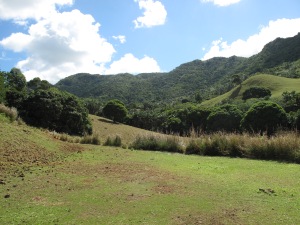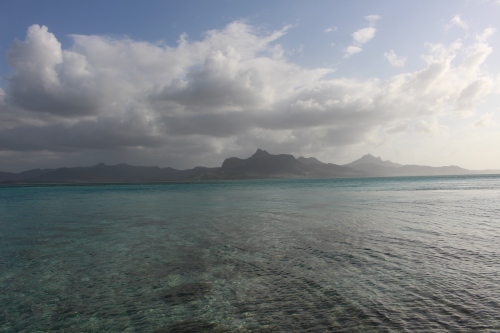I woke before dawn to the sound of chirping crickets and light rain pattering on the roof of the Mauritian Wildlife Foundation’s field station at Ferney. The sun rose and cast its light into the valley and onto the hills to reveal the staggeringly beautiful lush green landscape that is La Vallée de Ferney. The clouds dissipated to reveal a clear blue sky and the breeze was cool and refreshing. I don’t think we could have hoped for better weather for running on the morning of the Ferney trail.
The Ferney trail has three routes that you can run: 10 km, 17 km, and 35 km. I had entered the 17 km race, which involved 685 m of elevation: not the hardest race that I have ever entered but I was a little nervous about the effect that the heat was likely to have on me.
After jogging the couple of kilometers to the start line, I quivered with anticipation and nerves. I’ve never raced outside of the UK before and I had no idea what to expect. There were many people around me kitted out in very professional looking running gear. They spoke excitedly amongst themselves in French. I guessed that they were from Réunion, which is very mountainous and renowned for producing fantastic trail runners. My nerves heightened.
After the usual chaos of fighting my way past the initial crowd of runners, I found my running rhythm quickly and enjoyed flying along the dirt tracks in between sugarcane fields. As I started to climb the first hill I was surprised to see that I was passing a lot of people: I usually overtake people on the downhill and get overtaken on the uphill. As I continued to climb and passed more people it struck me that one of two things (or a combination of both) must have occurred – either my weekend runs up the hills in the Black River Gorges National Park had really paid off or the runners here were not as comfortable with hills as those back home. Whatever the case, I was delighted.
Up dirt tracks on exposed hills, along single tracks through the forests, and down steep and narrow paths thick with mud: this really was a fantastic trail. The views from the hills were staggering. One particularly beautiful scene was the first time that the Indian Ocean came into view: turquoise blue bay perfectly calm and protected by the outer reef that can be identified by a ring of frothy white water. I kept my eye out for the Mauritius Kestrel (Falco punctatus) but sadly they evaded me (and not for the first time since I moved to Mauritius a month ago). In many places the trails were so thick with red, iron-infused, mud that I had to stop to claw at the lugs from my trail shoes in attempt to gain more purchase and reduce the number of tumbles. Once when doing this I saw a tiny toad – the African common toad (Amietophrynus gutturalis).
I was second lady up until the ‘5 km to go sign’. At this point a woman, who had been very close behind me for some time, had something extra left and pushed ahead. This didn’t bother me too much though because I was confident that if there was a last hill then I could catch her again. Unfortunately, the hill came too late and I couldn’t close the gap that she had created between us. I finished third with a massive smile and plenty of mud on my face.


